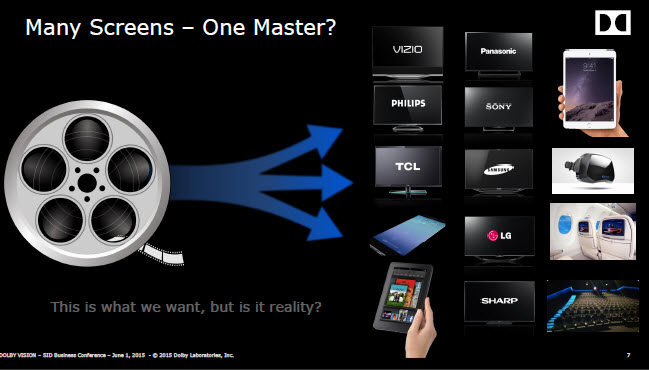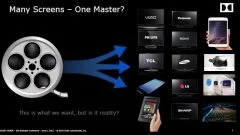Roland Vlaicu is VP of Consumer Imaging at Dolby and he talked about HDR. Dolby is now seeing others catching up with the interest that Dolby has had in this area for some years. Dolby believes that a combination of higher frame rates, higher resolutions and HDR/WCG is needed to really drive consumer demand.
However, it can’t be done, properly, just by post-processing at the set. That has been done for years, but really content creation needs a different approach to get the full benefit. “I’ve been waiting for this for my entire career” is a quote from Steven Spielberg on this concept who will use these technologies for future projects as well as re-grading existing content.
There is an idea of having a single master and then supporting many different displays (for more on this see our article on Joe Kane’s talk). The content looks very different on alternative displays.
At the moment, there tends to have to be a compromise between maintaining compatibility, by making content to the lowest common denominator, or choosing to optimise for the best device and knowing it won’t look good on some devices.
No set makers want the feature only on a few high end sets, they want to put it in the volume products, helping the margin across the range. There is a challenge in mapping the content to a range of different set qualities. Dolby has done a lot of work in this area to get the tone mapping optimised.
Panels have different strengths (e.g. in contrast or WCG or brightness) and Dolby can optimise to exploit the features. For example, a single zone dimming backlight can be improved a lot by careful management, rather than simply using a simple time constant. This can make lower cost hardware look better.
In response to a question, Dolby said breaking out of the CRT standards-based world and Dolby is part of the UHD Alliance. Dolby has a solution for set makers that also can deal with alternate HDR technologies.

